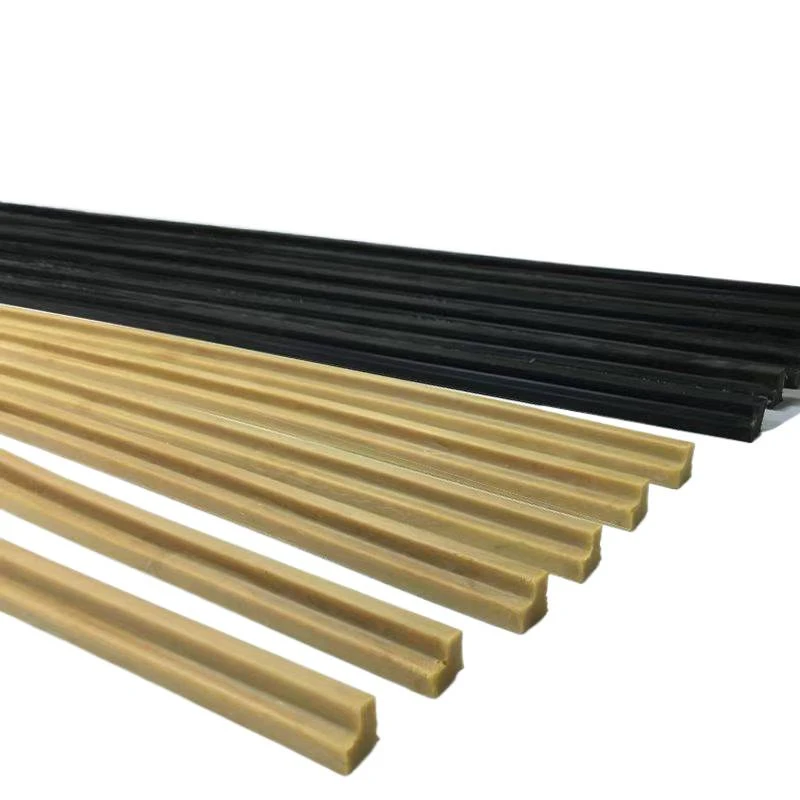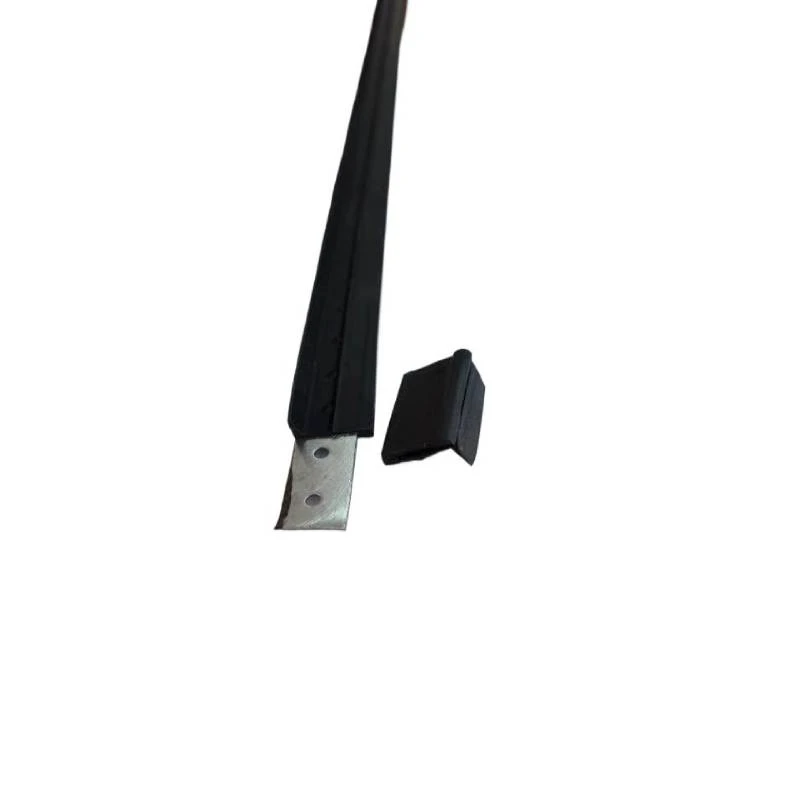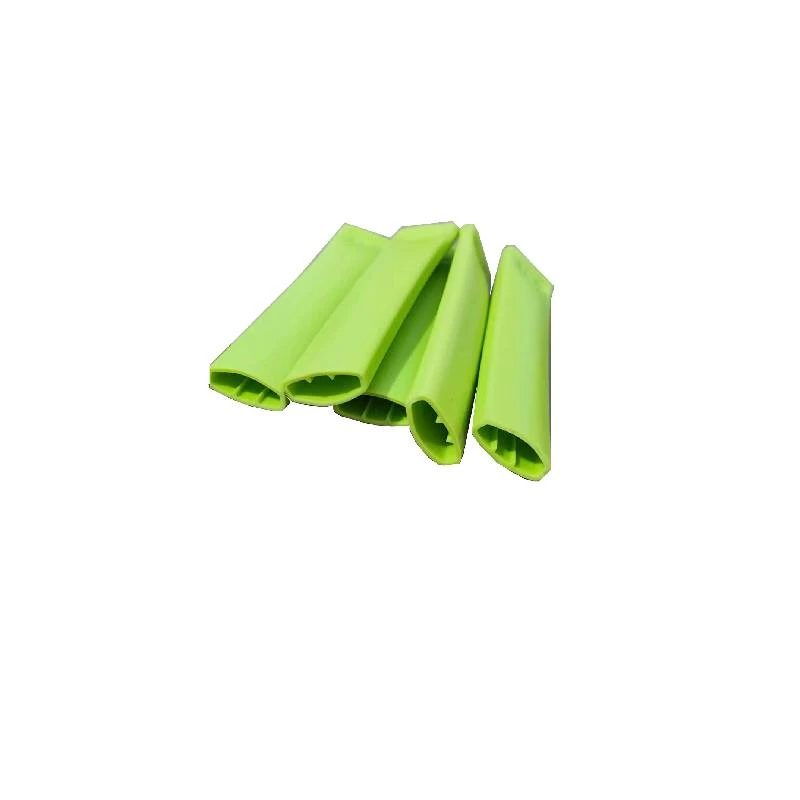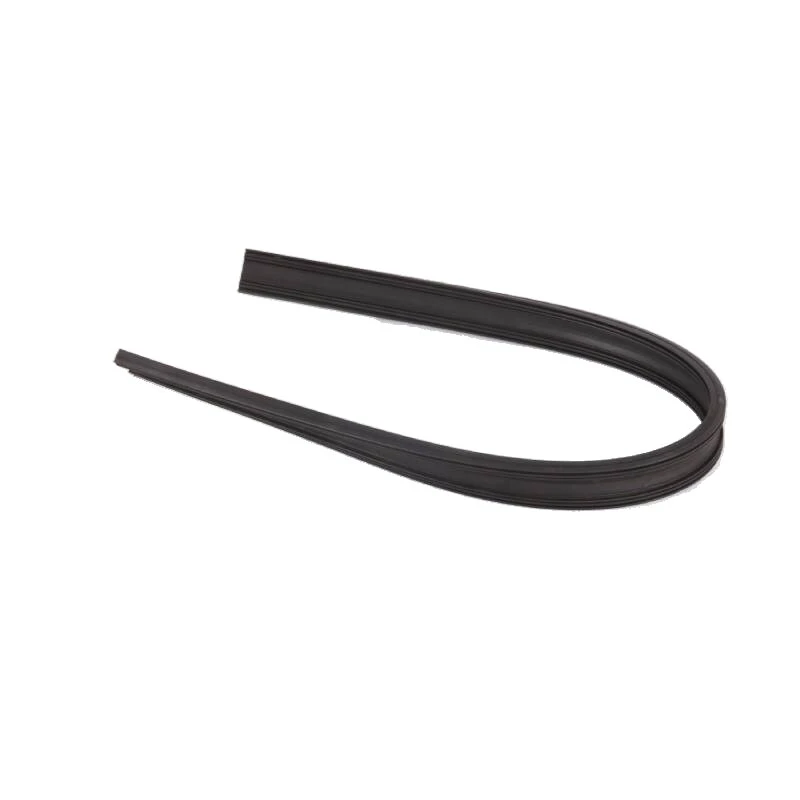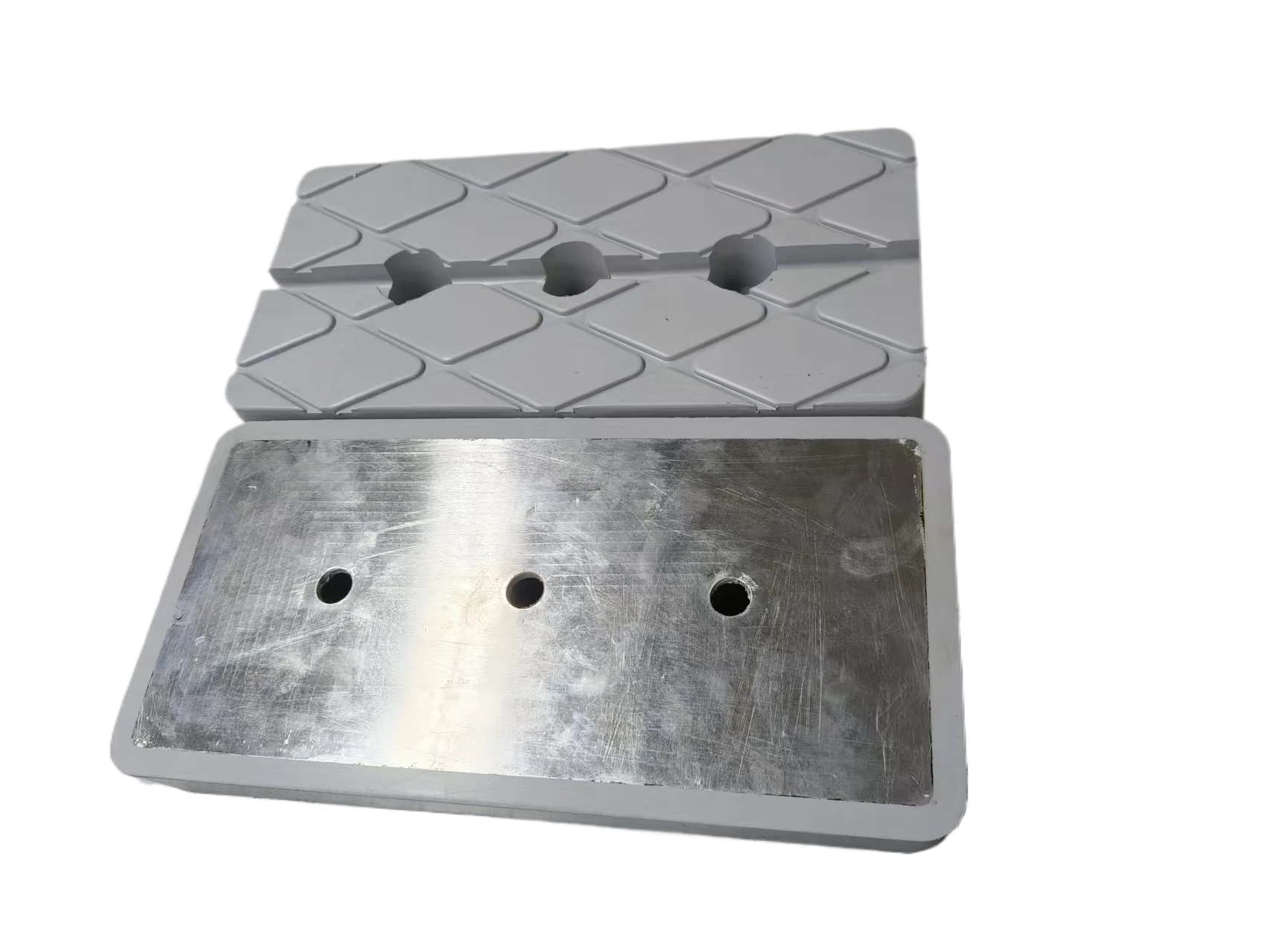Premium Rubber Cover Caps | Industrial Pipe & Hose Fittings
Industry Trends in Industrial Pipe and Component Protection
The global industrial landscape, particularly within sectors such as petrochemical, oil & gas, and water treatment, is witnessing an escalating demand for advanced protective solutions. As infrastructure ages and operational environments become more challenging, the need for robust and reliable components that can withstand extreme temperatures, corrosive chemicals, and abrasive forces is paramount. This drives innovation in materials science and manufacturing processes, focusing on longevity, performance, and environmental compliance.
A critical component in this ecosystem is the rubber cover caps, essential for safeguarding vital industrial assets. These caps play a crucial role in protecting exposed pipe ends, valve connections, and hydraulic ports from contamination, physical damage, and environmental degradation during storage, transit, and operation. The market trend indicates a shift towards specialized elastomers that offer superior chemical resistance and broader temperature ranges, moving beyond conventional rubber compounds. Furthermore, the integration of smart manufacturing techniques ensures precision engineering, catering to complex requirements such as those found in `rubber fittings tubing` or `rubber gas pipe fittings`. The emphasis is on extending the service life of industrial pipe couplings and reducing maintenance downtime, thereby enhancing operational efficiency and safety across various applications.
The demand for tailored solutions is also growing, with industries requiring components that perfectly match their specific operational needs, from `rubber hose pipe connector` designs to specialized caps for `oil and gas pipe fittings`. This push towards customization is fostering partnerships between manufacturers and end-users, ensuring that the protective elements are not just off-the-shelf products but engineered solutions that contribute significantly to asset integrity and operational resilience.
Manufacturing Process of High-Performance Rubber Components
The production of high-quality rubber components, including robust rubber cover caps, involves a precise, multi-stage manufacturing process designed to ensure optimal performance and durability. This technical journey begins with material selection and culminates in stringent quality assurance.
1. Material Selection and Compounding
The foundation of any superior rubber product lies in its raw materials. Common elastomers used for industrial cover caps include EPDM (Ethylene Propylene Diene Monomer) for excellent weather and ozone resistance, NBR (Nitrile Butadiene Rubber) for oil and fuel resistance, Silicone for high-temperature stability, and Neoprene for general-purpose applications with good chemical inertness. These raw polymers are meticulously blended with vulcanizing agents, fillers (e.g., carbon black, silica), plasticizers, and anti-degradants in precise ratios using internal mixers or two-roll mills. This compounding process determines the final mechanical and chemical properties of the material, critical for applications like `rubber vacuum hose adapters`.
2. Molding Processes
- Compression Molding: Pre-weighed rubber compounds are placed into a heated mold cavity. The mold is then closed under high pressure, forcing the rubber to conform to the mold shape. Heat and pressure initiate vulcanization (curing). This method is cost-effective for medium to large production runs and ideal for larger, simpler cap designs.
- Injection Molding: Rubber compound is preheated and then injected under high pressure into a closed, heated mold cavity. This process is highly automated, offers excellent dimensional accuracy, and is suitable for high-volume production of intricate `3 8 rubber hose elbow` or rubber cover caps.
- Transfer Molding: A hybrid of compression and injection molding. The rubber is first placed in a "pot" above the mold cavity, then forced into the cavity through sprues under pressure. This provides better control over flash and can produce more complex parts than compression molding.
3. Curing and Post-Molding
Once molded, the rubber components undergo a curing (vulcanization) process, where the polymer chains cross-link, giving the rubber its permanent elastic properties. After curing, parts are typically deflashed, where excess material (flash) is removed. This can be done manually, cryogenically, or by precision trimming machines. Subsequent processes might include grinding for tight tolerances or surface treatments.
4. Quality Control and Testing Standards
Adherence to international testing standards is non-negotiable. Finished rubber cover caps undergo rigorous quality checks, including:
- Dimensional Inspection: Using calipers, micrometers, and optical comparators to ensure conformity to design specifications (e.g., ANSI B16.5 for flange protection).
- Physical Property Testing: Material hardness (Shore A or D per ASTM D2240), tensile strength (ASTM D412), elongation at break, and compression set (ASTM D395) are measured.
- Environmental Resistance: Tests for chemical resistance (ASTM D471), ozone resistance (ASTM D1149), and temperature resistance (ASTM D573) are performed to simulate demanding operational conditions.
- Certifications: Manufacturers adhere to ISO 9001 for quality management and may hold specific industry certifications like NSF for potable water applications or FDA compliance for food-grade materials.
Target Industries and Advantages
These precisely manufactured rubber cover caps serve a broad spectrum of target industries, including petrochemical, metallurgy, water supply & drainage, automotive, and HVAC. Their advantages in typical application scenarios are substantial:
- Energy Saving: By ensuring airtight seals and preventing leakage, especially in `industrial hose & pipe fittings`, they contribute to energy efficiency and reduced fluid loss.
- Corrosion Resistance: Designed to withstand aggressive chemicals, saltwater, and atmospheric corrosion, extending the lifespan of valuable equipment and preventing costly replacements of `industrial pipe connectors`.
- Vibration Dampening: The inherent elasticity of rubber helps absorb vibrations, reducing noise and mechanical stress on connected components.
- Enhanced Safety: Protecting personnel from sharp edges and safeguarding sensitive components from environmental hazards.
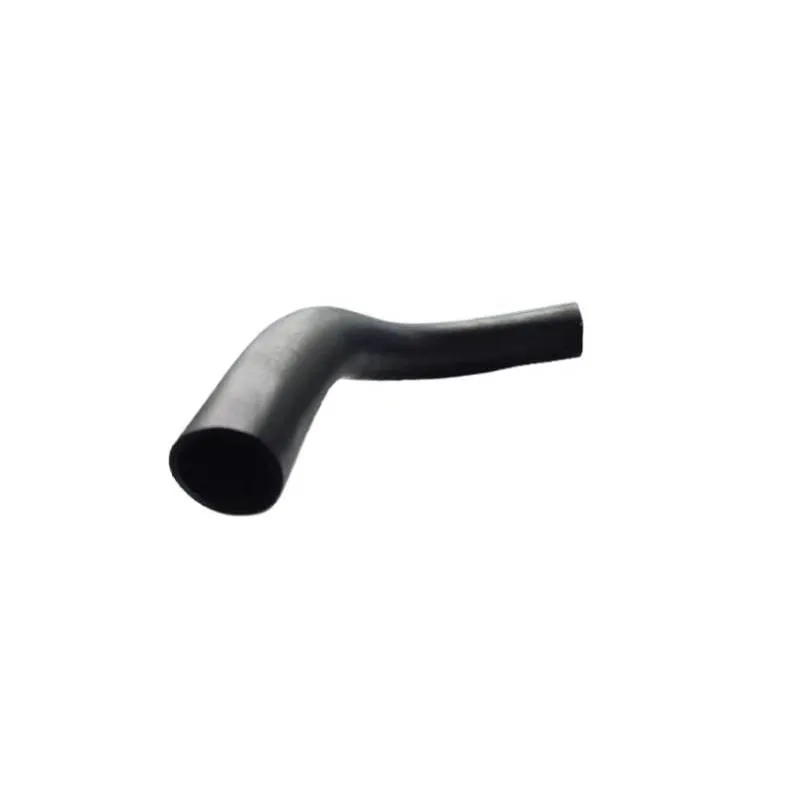
Figure 1: Specialized rubber components awaiting final inspection.
Technical Specifications of Industrial Rubber Cover Caps
Understanding the precise technical specifications of industrial rubber cover caps is critical for ensuring optimal performance and longevity in demanding applications. These parameters dictate suitability for specific environments, from high-temperature industrial processes to corrosive chemical handling or robust outdoor use. Below is a representative table outlining key specifications for high-performance rubber cover caps.
| Parameter | Unit | EPDM (Standard) | NBR (Oil Resistant) | Silicone (High Temp) |
|---|---|---|---|---|
| Material Type | - | EPDM | Nitrile Rubber | Silicone Rubber |
| Hardness | Shore A | 60-80 | 60-90 | 30-80 |
| Temperature Range | °C | -40 to +120 | -30 to +100 | -60 to +230 |
| Tensile Strength | MPa | 8-15 | 10-20 | 5-12 |
| Elongation at Break | % | 300-600 | 200-500 | 150-400 |
| Chemical Resistance | - | Good (Acids, Alkalis, Steam) | Excellent (Oils, Fuels, Solvents) | Excellent (Hot Air, Ozone) |
| UV/Ozone Resistance | - | Excellent | Poor to Fair | Excellent |
| Standard Color | - | Black | Black | Translucent/Red |
These specifications are crucial when selecting materials for applications such as a `rubber hose connector` or `50mm flexible rubber hose` adapters, where environmental exposure and fluid compatibility are key. For instance, in an oil and gas environment, NBR would be preferred for its superior resistance to hydrocarbons, whereas EPDM excels in outdoor applications with prolonged UV exposure. Our custom manufacturing capabilities allow for precise adjustments to these parameters, ensuring that the final product, whether a standard cap or a complex `pvc pipe spare parts` protector, meets the exact performance envelope required by the client.
Application Scenarios and Operational Efficiency
The versatility of rubber cover caps makes them indispensable across a multitude of industrial application scenarios, significantly enhancing operational efficiency, safety, and component longevity. Their primary function is protection, but their impact extends to cost savings through reduced maintenance and improved system reliability.
1. Protection during Storage and Transportation
One of the most common applications is the protection of pipe ends, flanges, and fittings during storage and transit. For example, when `industrial pipe couplings` or `oil and gas fittings` are shipped, they are susceptible to dirt, moisture, and physical impact. High-density rubber cover caps create a secure seal, preventing contamination ingress and safeguarding precision-machined surfaces from scratches or deformation. This ensures components arrive on-site in pristine condition, ready for immediate installation, thereby streamlining project timelines and reducing rejection rates.
2. Sealing and Masking in Manufacturing Processes
In various manufacturing and finishing processes, such as painting, plating, or powder coating, rubber caps serve as effective masks. They protect threads, critical bores, or delicate surfaces from coating materials, ensuring that only the intended areas are treated. This is particularly relevant for `custom metal parts` and `cnc aluminum parts` that require selective finishing, guaranteeing precision and reducing rework. Furthermore, in operations involving hydraulic systems, caps are used to seal off open lines, preventing fluid leakage and protecting against ingress of airborne particulates.
3. Vibration and Noise Dampening
Rubber's inherent elastic properties make it an excellent material for absorbing vibrations and dampening noise. In machinery and equipment assemblies, especially those involving `plastic caster wheels for furniture` or industrial machinery, strategically placed rubber cover caps can significantly reduce operational noise and mitigate vibrational stress on components. This not only improves the working environment but also extends the life of mechanical systems by minimizing fatigue on other parts.
4. Electrical Insulation and Safety
Certain rubber compounds, particularly those with high dielectric strength, are ideal for electrical insulation. Rubber cover caps can be used to insulate exposed electrical terminals, connectors, or cable ends, preventing short circuits and protecting personnel from electrical hazards. This application is vital in sensitive electronic enclosures or in power generation facilities, ensuring compliance with safety regulations.

Figure 2: Rubber caps protecting critical pipe connections in a manufacturing environment.
Technical Advantages and Performance Metrics
The strategic deployment of high-grade rubber cover caps in industrial environments yields significant technical advantages, transcending simple protection to offer enhanced performance, longevity, and operational efficiency. These advantages are measurable through various performance metrics that validate their superior engineering.
Superior Sealing Capabilities
Unlike rigid alternatives like some `plastic part` or `pvc pipe spare parts`, the inherent elasticity and conformability of rubber allow it to create an exceptionally tight seal against irregular surfaces. This is crucial for preventing the ingress of moisture, dust, and corrosive agents into sensitive `industrial pipe fittings` or component orifices. The ability to conform ensures a snug fit, even with minor dimensional variations in the mating part, leading to superior sealing integrity. This minimizes potential for contamination-induced failures and reduces the frequency of maintenance.
Chemical Inertness and Environmental Resilience
Modern rubber formulations are engineered to exhibit high chemical inertness, resisting degradation from a wide array of industrial fluids, acids, alkalis, and solvents. Specialized elastomers like FKM (Fluoroelastomer) offer extreme resistance to aggressive chemicals and fuels, crucial for `oil and gas pipe fittings` where hydrocarbon exposure is constant. Furthermore, UV and ozone resistance, particularly in EPDM compounds, ensures long-term outdoor performance without embrittlement or cracking, a common issue with standard `plastic part` options.
Wide Temperature Tolerance
High-performance rubber cover caps are designed to maintain their physical properties across extensive temperature ranges. Silicone rubber, for instance, can operate effectively from -60°C to over +230°C, making it suitable for both cryogenic and high-heat applications. This thermal stability prevents material hardening at low temperatures and softening or degradation at high temperatures, ensuring consistent protection irrespective of environmental fluctuations.
Vibration Dampening and Noise Reduction
The viscoelastic properties of rubber enable effective absorption of kinetic energy, providing excellent vibration dampening. This reduces mechanical stress on connections and adjacent components, extending the operational life of equipment. In environments with heavy machinery or fluid transfer systems, these caps also contribute to significant noise reduction, improving workplace safety and comfort. This is a critical advantage over more rigid materials, which often transmit vibrations rather than absorb them.
Cost-Effectiveness and Extended Service Life
While the initial investment in high-quality rubber cover caps might be marginally higher than basic `plastic part` alternatives, the long-term cost benefits are substantial. By protecting valuable equipment from damage, contamination, and premature wear, these caps extend the service life of industrial assets, reduce maintenance frequency, and prevent costly production downtime. Their durability under harsh conditions ensures they do not require frequent replacement, offering a superior total cost of ownership.
Vendor Comparison: Choosing Your Rubber Component Supplier
Selecting the right supplier for industrial rubber components is a strategic decision that directly impacts product quality, operational reliability, and project timelines. While many suppliers offer rubber products, distinguishing between generalists and specialists, particularly for items like rubber cover caps, is crucial. This comparison highlights key criteria for evaluating potential partners.
| Criterion | Specialized Manufacturer (e.g., FY Gasket) | Generalist Supplier | Low-Cost Offshore Vendor |
|---|---|---|---|
| Material Expertise | Deep knowledge of elastomer chemistry, custom compounding, application-specific material selection. | Limited material options, standard compounds, less guidance on niche applications. | Basic compounds, material substitution risk, limited data on performance. |
| Customization Capabilities | In-house design, tooling, prototyping for unique geometries and performance needs (e.g., `special-shaped rubber elbow`). | Minor modifications to existing designs, outsourcing for complex molds, longer lead times. | Limited to standard sizes, high MOQs for custom, design intellectual property risk. |
| Quality Certifications | ISO 9001, ASTM, REACH, RoHS compliance, traceability, rigorous QC processes. | Basic QC, some certifications but less comprehensive, potential for inconsistencies. | Often lacking robust certifications, inconsistent quality, difficult to audit. |
| Technical Support & R&D | Dedicated engineering teams, collaborative design, R&D for new materials/processes. | Sales-focused support, limited engineering depth, reactive problem-solving. | Minimal technical support, language barriers, no R&D investment. |
| Lead Time & Reliability | Optimized production, reliable delivery, inventory management solutions, responsive to urgent needs. | Standard lead times, less flexibility for rush orders, potential for supply chain disruptions. | Variable lead times, customs delays, higher risk of order errors and quality issues. |
Choosing a specialized manufacturer ensures access to deep technical knowledge and a commitment to quality that is often lacking in generalist or low-cost alternatives. This is especially true for critical components like rubber cover caps that protect expensive industrial equipment. While some applications might tolerate `plastic part` alternatives or standard components, precision industrial needs, particularly for `brass components` or `metal lathe parts` that require protective sealing, demand the expertise of a dedicated rubber manufacturer. Investing in the right supplier ultimately translates to superior product performance, reduced operational risks, and a stronger return on investment.
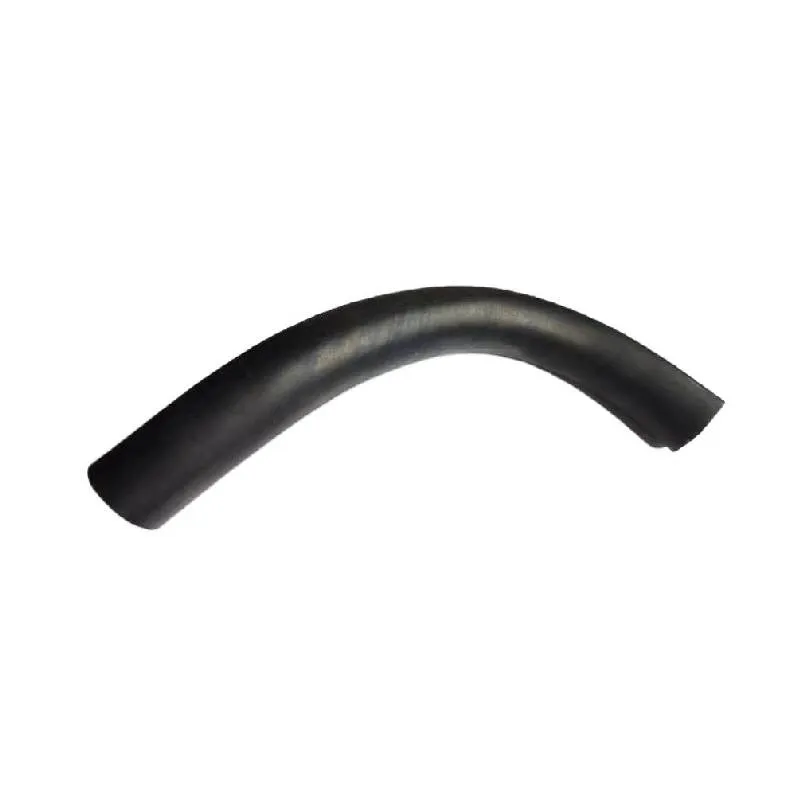
Figure 3: Advanced manufacturing facility for precision rubber components.
Customized Solutions for Unique Industrial Demands
Standard off-the-shelf components, while suitable for general applications, often fall short of the exacting requirements of specialized industrial processes. This is where customized solutions for rubber cover caps and other rubber fittings become indispensable. A specialized manufacturer collaborates closely with clients to develop bespoke products that address unique challenges in geometry, material performance, and operational environment.
Tailored Design and Engineering
The customization process typically begins with a thorough understanding of the client's application. This includes detailed analysis of the component to be protected (e.g., specific dimensions of `industrial pipe couplings`, unique angles of a `special-shaped rubber elbow`), environmental conditions (temperature, chemical exposure, UV radiation), and performance expectations (sealing pressure, vibration dampening). Using advanced CAD/CAM software, engineers design rubber cover caps with precise dimensions, wall thicknesses, and internal features to ensure an optimal fit and seal. This can range from simple modifications to entirely new designs, addressing challenges that standard `plastic part` solutions cannot.
Application-Specific Material Compounding
Beyond standard elastomers, custom solutions often involve developing proprietary rubber compounds. For instance, an application requiring extreme chemical resistance coupled with high flexibility for `rubber hose connector` might necessitate a unique blend of FKM and a specialized additive. Similarly, a cap for use in sub-zero mining operations might require a specific silicone compound designed for enhanced cold flexibility. Our material scientists work to formulate compounds that meet exact specifications for hardness, tensile strength, elongation, chemical resistance, and thermal stability, ensuring peak performance in the most demanding settings.
Prototyping and Validation
Before full-scale production, prototyping is a critical step. Rapid prototyping techniques, often involving 3D printing for mold inserts or quick-turn CNC machining for molds, allow for the creation of functional prototypes. These prototypes are then subjected to rigorous testing, mimicking real-world conditions. This iterative process allows for design refinement, ensuring that the final customized rubber cover caps meet all performance criteria. This approach is similar to the validation process for `prototype plastic parts`, adapted for elastomer characteristics.
Collaborative Partnership
A key aspect of successful customization is a strong collaborative partnership between the manufacturer and the client's engineering teams. This ensures open communication, shared expertise, and a unified approach to problem-solving. Whether it's for `metal parts suppliers` needing specialized protection or `plastic wheel manufacturers` requiring specific sealing components, the ability to co-develop solutions ensures that the end product is perfectly integrated into the client's system, delivering maximum value and operational advantage.
Application Case Studies
Real-world application demonstrates the tangible benefits of high-performance rubber cover caps. These case studies highlight how customized solutions have effectively addressed complex industrial challenges, leading to enhanced operational reliability and significant cost savings.
Case Study 1: Petrochemical Plant Expansion Project
Client: A major international petrochemical corporation expanding its crude oil refining capabilities in a coastal region.
Challenge: During the construction phase, thousands of newly installed `oil and gas pipe fittings`, valve flanges, and `industrial pipe connectors` were exposed to harsh environmental elements, including corrosive saltwater spray, high humidity, and airborne dust. Standard plastic caps were failing rapidly, offering inadequate protection, leading to increased risk of internal contamination and potential damage to precision-machined surfaces, jeopardizing project timelines and equipment longevity.
Solution: We engineered and supplied custom-molded EPDM rubber cover caps. These caps were designed with an enhanced ribbed internal structure to provide a tighter seal and greater resilience. The EPDM compound was specifically formulated for superior resistance to ozone, UV radiation, and saltwater corrosion, far exceeding the performance of generic alternatives. A bespoke size range was developed to fit various `industrial pipe couplings` and specialized elbows.
Results: The custom EPDM caps provided robust, long-term protection, effectively sealing critical components from environmental ingress. The client reported a 75% reduction in inspection-related rework due to contamination and zero incidents of flange face damage during the storage and installation phases. This translated into significant time and cost savings, contributing to the project being completed on schedule and within budget, ensuring the integrity of vital `metal parts suppliers` supplied components.
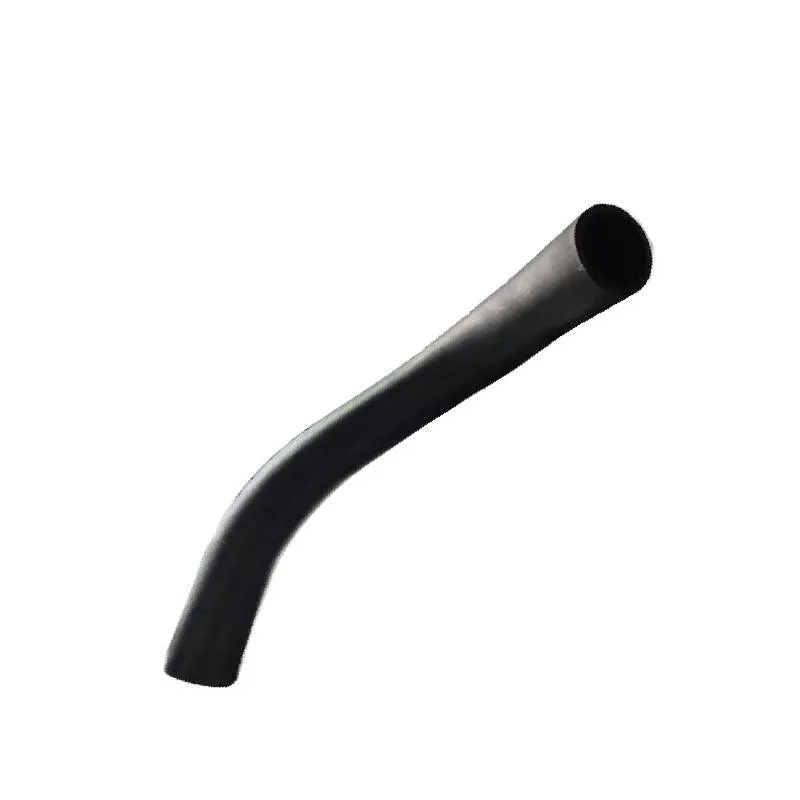
Figure 4: Robust rubber components in a challenging industrial environment.
Case Study 2: High-Performance Hydraulic System Protection
Client: A leading manufacturer of heavy construction equipment, requiring durable protection for hydraulic line connectors and ports during assembly and shipping.
Challenge: Hydraulic systems are highly susceptible to contamination from dust and debris, which can lead to premature component failure. The client was using simple polyethylene caps, which often dislodged during handling and offered minimal protection against abrasive particles or accidental impacts. The small, intricate connections, including `brass turned parts` and precision-machined aluminum components, needed a more secure and resilient cap.
Solution: We developed specialized NBR (Nitrile Butadiene Rubber) rubber cover caps with an internal retention lip and a slightly tapered design. The NBR material was chosen for its excellent resistance to hydraulic fluids and oils, ensuring material compatibility. The custom design provided a significantly tighter grip, preventing accidental removal, and its flexibility allowed for easy application and removal by assembly line workers. The caps were tested for vibration resistance and seal integrity under simulated transport conditions.
Results: The implementation of these custom rubber caps resulted in a dramatic improvement in cleanliness for hydraulic components. The client reported a 90% reduction in hydraulic system contamination-related issues during pre-delivery inspections. This directly translated into fewer warranty claims related to hydraulic system failures, enhancing product reliability and customer satisfaction for their high-value equipment. The durability of the caps also allowed for their reuse in internal processes, contributing to sustainability initiatives, and protecting crucial `metal components` from damage.
Frequently Asked Questions (FAQ)
Q1: How do I select the right material for my rubber cover caps?
A: Material selection is critical and depends entirely on your specific application. Key factors include operating temperature range, exposure to chemicals (acids, bases, oils, solvents), UV/ozone exposure, and mechanical stress. Common materials include EPDM (weather resistance), NBR (oil/fuel resistance), Silicone (high/low temperature), and Viton (extreme chemical resistance). Our engineering team can provide expert consultation to help you choose the optimal elastomer for your specific needs, ensuring long-term performance and compatibility with components like `brass electrical parts`.
Q2: What is your process for customizing rubber cover caps for unique geometries?
A: Our customization process begins with a detailed assessment of your requirements, often involving CAD drawings or physical samples of the component to be protected. Our in-house design team then creates precise 3D models of the cap. We utilize advanced molding techniques, including compression, transfer, or injection molding, to produce samples or prototypes for your approval. This iterative approach ensures the final product perfectly matches your specifications, even for highly complex `custom cnc aluminum parts` or non-standard `rubber fittings tubing`.
Q3: What are your minimum order quantity (MOQ) requirements for custom rubber products?
A: MOQs for custom rubber cover caps can vary depending on the complexity of the design, chosen material, and molding process. While we aim to be flexible, custom tooling typically incurs an initial cost which is amortized over larger production runs. We encourage you to discuss your specific volume requirements with our sales team; we are often able to accommodate smaller initial runs for prototyping and evaluation, particularly for specialized `small metal parts manufacturing` protection.
Q4: How do your rubber components compare to plastic alternatives in terms of durability and performance?
A: While `plastic part` options (like `plastic parts washer` components) can be cost-effective for certain applications, rubber generally offers superior elasticity, chemical resistance, temperature tolerance, and vibration dampening. Rubber components, especially those made from high-performance elastomers, are less prone to cracking, embrittlement, or permanent deformation under stress, making them ideal for critical sealing and protection tasks. For instance, a rubber cap provides a much more resilient and long-lasting seal for `steel press fittings` than a comparable plastic one, especially in dynamic or harsh environments.
Order Fulfillment, Warranty, and Customer Support
At FY Gasket, we are committed to providing not only high-quality rubber cover caps but also a comprehensive service experience that underscores our trustworthiness and dedication to client success. Our robust operational framework ensures seamless order fulfillment, backed by strong warranty commitments and proactive customer support.
Lead Time and Fulfillment
Our manufacturing processes are optimized for efficiency and precision. Standard orders for existing designs typically have a lead time of 2-4 weeks, depending on volume and current production schedules. For custom tooling and new product development, lead times range from 6-10 weeks, including design, prototyping, and initial production runs. We leverage advanced inventory management systems to ensure timely delivery and offer expedited shipping options for urgent requirements. Our logistical partners are carefully selected to ensure global reach and reliable delivery, even for complex `aluminium parts` components that require specialized handling.
Warranty Commitments
We stand by the quality and performance of our rubber cover caps and all other manufactured products. All components are guaranteed to be free from defects in material and workmanship for a period of 12 months from the date of shipment, provided they are stored, installed, and used in accordance with our specifications and industry best practices. Should any product exhibit defects within this period, we commit to repair or replace the item promptly, ensuring minimal disruption to your operations. Our warranty is a testament to our adherence to stringent quality control standards, including ISO 9001 certification.
Customer Support and Technical Assistance
Our relationship with clients extends far beyond the sale. Our dedicated customer support team and experienced technical engineers are available to provide comprehensive assistance, from initial product selection and material recommendations to troubleshooting and post-installation support. We offer expert guidance on product integration, performance optimization, and custom solution development, ensuring that you derive maximum value from our `metal components` protection solutions. For technical inquiries, product specifications, or assistance with an order, please contact us via email at info@fygasket.com or by phone at +86-XXX-XXXX-XXXX (placeholder). We pride ourselves on responsive communication and proactive problem-solving, solidifying our role as a trusted partner in your supply chain.

Figure 5: Rigorous quality inspection ensuring product integrity.
References
- ASTM International. (n.d.). Standards for Rubber, Carbon Black and Gaskets. Retrieved from https://www.astm.org/products-services/standards/books-journals/journal-of-testing-and-evaluation.html
- ISO. (n.d.). ISO 9001: Quality management systems – Requirements. Retrieved from https://www.iso.org/iso-9001-quality-management.html
- Smith, J. C. (2018). Engineering with Rubber: How to Design Rubber Components. Hanser Publications.
- Rubber Manufacturers Association. (n.d.). Rubber Handbook. Retrieved from https://www.rma.org/
-
Plastic Pelton Wheel – Lightweight, Cost-Effective Hydropower SolutionsNewsNov.24,2025
-
Durable and Cost-Effective Plastic Sheave Wheels for Modern IndustryNewsNov.24,2025
-
Plastic Spoke Wheel – Lightweight, Durable Wheels for Global Mobility SolutionsNewsNov.24,2025
-
Plastic Stem Casters: Durable, Cost-Effective Mobility Solutions for Every IndustryNewsNov.24,2025
-
Plastic Wheel Roller: Durable, Lightweight Solutions for Modern IndustryNewsNov.24,2025
-
Plastic Wheelchair Wheels: Durable, Affordable Mobility Solutions WorldwideNewsNov.24,2025
-
Small Plastic Casters – Durable, Lightweight Wheels for Global MobilityNewsNov.24,2025




